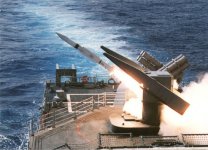Hay shipmate, MK26GMLS. Good luck on trying to save her. I don't hold much hope for you. I am not being unsupportive, just realistic. This is what happened to the ships I was on:
USS Guadalcanal LPH-7, target practice, sunk
USS Davidson DE-1045, sold to Brazil, served in their navy; she was being sent to India to be dismantled and sank off the Brazilian coast instead
USS Luce DLG-7, Dismantled
USS Portland LSD-7, target practice, sunk
Around about two years after the Cold War ended, the USN began downsizing and putting large numbers of ships out of commission. Entire classes of ships were put out. Plus, the shift from a steam-propulsion aluminum superstructure (aluminum burns real well, proven in the Falklands by the Royal Navy) to an all nuc or gas turbine/diesel steel superstructure navy was well underway by then.
I served as a special buttistant to the Commanding Officer of the Marine Propulsion Engineering Systems Schools at Naval Training Center, Great Lakes in the early 80’s. He was a member of the Department of the Navy’s Marine Propulsion Steering Committee in D.C. That committee was making the decisions regarding what propulsion systems the Navy would use in the next century and beyond. The decision to shift to from steam to gas turbine and diesel was to save money. Steam propulsion costs much more in terms of manpower, parts, and fuel costs and it adds to the size and shape of the ship’s hull.
Even all the surface nuc cruisers were dismantled and their reactors buried underground in western Washington State in the 90’s. They too used the rail-launcher systems and the move was to the box launcher systems. Now no more rail launcher system capable ships are in commission. Plus the nuc cruisers did not have the Aegis combat system and they used too many crewmembers.
The result of this mass decommissioning was the second largest number of decommissioned navy vessels in history, second to the period after WWII, sitting in reserve, some were not even mothballed, just parked with flooding detectors installed.
With such large numbers of ships full of PCB’s, oil products and other environmental concerns, the best most cost effective method of disposing of them was to sink them in deep water far from land. US law prohibits the transfer of former US vessels to a foreign yard for scrapping. 24 ships, mostly the old oil fired CV’s (carriers) and larger amphibious ships are being offered to coastal states for use as reefs. The state wanting the reef has to pay for the environmental clean up of the ship. The Oriskany CV-34 was sunk as reef off Florida in May of 2006 after many years of clean up and decision making about her fate. There are six carriers, with one soon to join them (the USS Kitty Hawk) waiting for their fate.
The USS America was used as a demonstration model for how-to-destroy a carrier. It was sunk after 20 some days of explosion tests in very deep water off the east coast.
This is a good link that has a history and pictures of all of the vessels of the USN since the age of steel began
http://www.navsource.org/
This is a good link to NAVSEA (Naval Sea Systems Command). It’s to the Naval Vessel Registry web site for every ship since 1900 and some before
http://www.nvr.navy.mil/
This is a link to a couple of videos some divers in Brazil made when they dove on the USS Davidson
http://www.wreckfinder.com.br/port/encontrados/ctparaibaVideos.shtml click on either video - 1 or video –2.
The primary reason why the Missouri was saved is obvious she was where WWII ended. The other Iowa’s are also preserved. New Jersey in Camden; Wisconsin in Norfolk and Iowa is waiting for a home.
Lots of sailors have shed lots of tears over the fate of their ships.



